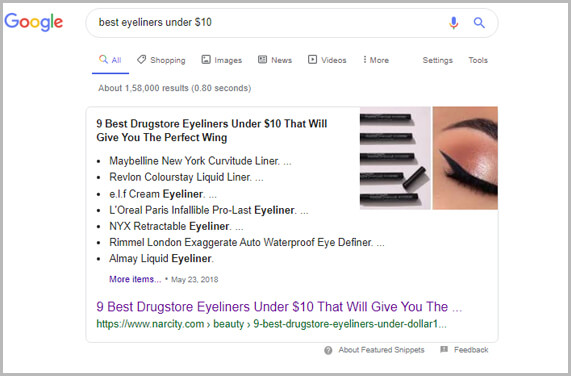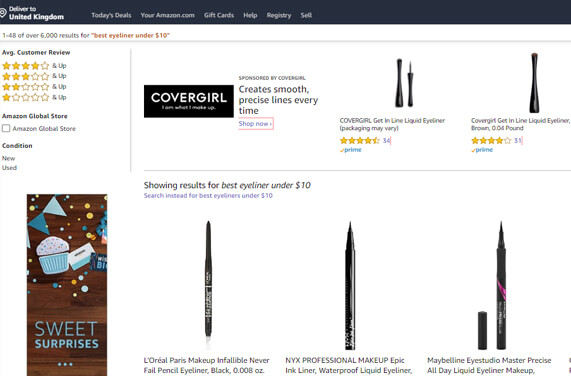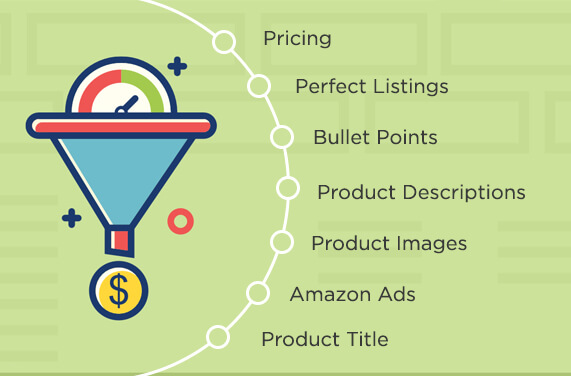
Being the most popular online marketplace, Amazon needs no introduction. What’s great about this platform is that it is not just used for shopping, but also for product searches and checking the current price for it. That’s right! About 54% of product searches take place on Amazon! The platform may have started as a bookstore but it has sure come a long way ever since. You can find potentially any product listed on Amazon these days, you name it!
There’s one thing that many people forget though. Amazon is an eCommerce search engine, and a powerful one at that. In fact, after Google and Youtube, Amazon is the largest and the most powerful search engine out there. Well, Amazon is so big that it owns about 47% of total online sales. Now that’s quite an achievement, isn’t it? Loaded with more than 500 million products, Amazon has become a big deal, big enough to compete with Google!
Right now, Amazon is way ahead of Google in product search!

But the real question is, what drives these powerful search engines? This may sound mainstream, but it all revolves around SEO and, of course, the search engine algorithms involved. You see, these search engines have been developed using advanced machine learning techniques. They identify each and every search made by the users and study the patterns recorded. They then learn and predict search intent based on these patterns. Every search engine does that, but when it comes to Google and Amazon, the two largest search engines, it’s a different ball game.
Let’s talk about the constant algorithm updates. Do you know why a number of updates are rolled out every year for the Google algo? Because it is becoming increasingly difficult to comprehend the users’ search intent. As a result, Google works hard on improving its search engine by introducing regular algorithm updates.
Search intent issues? Amazon ain’t got any!
Amazon is all about selling. It’ll do whatever it takes to direct you to the perfect listing that actually matches your requirements. Understanding the searcher’s intent and delivering the exact corresponding results is what Amazon does like a pro.
It’s all because of SEO, which is quite different for Google and Amazon. Let’s understand this with the help of an example. Consider this query: Best eyeliners under $10. Now, this query, when entered into the corresponding search bars, will be interpreted in different ways.
What Google search engine thinks:
The user is looking for a list of best eyeliners under $10. A blog with detailed information on the best eyeliners would be a perfect fit.

What Amazon search engine thinks:
The user wants to BUY an eyeliner that’s under $10. Product listings that offer eyeliners for less than $10 would do.

Amazon tends to focus on selling a certain product, which is why it always lists the best available product with respect to the query entered. This is partly because people don’t ask questions on Amazon. They’re mostly there to buy.
The Google algo undergoes constant improvements to understand how humans communicate, whereas Amazon is out there doing a very simple thing i.e. understanding the language enough to rank their listings and sell products.
So, you see why Amazon is outrunning Google with regard to product searches?
The secret powerhouse? A9!
Amazon sure does lead the eCommerce search. But how? Well, it’s all because of A9, the algorithm that drives Amazon search results. What A9 solely focuses on is sales velocity, which is nothing but the rate at which your products are selling on Amazon in terms of both speed and volume.
On the other hand, Google SEO is completely focussed on website optimization and driving maximum click-throughs on the SERP.

Let’s study each of Amazon’s ranking factors individually.
Conversion Rate:

Conversion rates do affect a listing’s ranking in Amazon’s search results but it is further dependent on various other factors. Here are some factors that decide what your conversion is going to be:
-
Listings and their degree of perfection
Do you know what makes an Amazon listing sell? It’s their level of perfection. And perfection would imply that each and every aspect of your listing is organized in a way that appeals to both the A9 and the customer, which is why it ranks high.
-
Pricing
Amazon A9 algo uses the pricing to predict the listings that are most likely to sell. For example, if there’s an existing listing that sells a Michael Kors watch at $99 and then you upload the same product at $90, A9 will definitely notice your listing and rank it higher than the existing one. This is because buyers are more likely to purchase your product at a reduced price rather than the one priced at $99. So, optimizing your prices manually or via a repricing software can be a good option to rank high, as long as you still manage to maintain your margins and don’t suffer any losses. Use competitive pricing to keep up with your competitors as well as the current market value.
-
Product title
A9 wants your title to be perfect to your listing higher. And by perfect we mean framing one using targeted keywords and all the important product details while keeping the word limit in mind. Remember, keyword stuffing is never appreciated. A title that reveals enough product info will drive maximum click-throughs and hence the highest rankings.
-
Product images
Visual content hardly ever fails to entice customers. The same holds true for Amazon listings and the A9. If you want higher rankings and more conversions, you have got to put up the best ever product images. The quality? High. The resolution? High. The clarity and relevance? Also high. The best approach to this could be using a testing tool to split testing different image versions. Also, getting them edited by a professional photo editor is always recommended.
-
Product descriptions
A well-framed product description always manages to get A9’s attention. This is because more than 50% of Amazon customers read the product copy and base their purchase decision on the same. So, if you include a fair number of targeted keywords (one after every 100 words) throughout your description and make it interesting to read with the help of visuals, your listing is very much likely to rank high. Leveraging A+ and EBC content will do it for you.
-
Bullet points
A9 also notices your bullet points and how relevant they are with respect to your listing. They must contain your targeted keywords along with a brief description of all the primary features of your product. If they answer all the obvious questions about the product, they make the cut.
-
Amazon ads
Amazon SEO is all about your listings’ click-through rate and conversions. Click-throughs can, to an extent, be taken care of with the help of Amazon ads. Sponsored ads work well in directing additional traffic to your listing and may lead to increased conversions too.
Keyword Relevance

When it comes to keywords, many sellers out there are unable to identify the difference between a relevant and targeted keywords. Sometimes, the keywords that are relevant to the Amazon search engine may seem to be working well as targeted keywords. For example, the keywords “vintage guitar” or “vintage guitar brown” could be two of the targeted ones. But a phrase like “brown color vintage guitar without strap” may not be a targeted one, per se. If it’s being searched on Amazon, it would make sense to A9. And A9 wants you to incorporate this in your listing so that it can be ranked for a corresponding user query. Luckily, you can implement these types of keywords as your backend search terms.
The best way to work on this is to conduct competitor and customer behavior analysis. Dig deeper to see what kind of keywords are working. Prioritize them and test a few to see what works best for your listings. Including the most important keywords at the beginning like the title, bullet points, image alt tags, etc. is a good choice to make A9 notice you instantly.
Customer Satisfaction

Amazon is all about the customer. If your listing offers the customers what they want, you’ll be noticed and ranked higher. Amazon wants its customers to have a glitch-free and pleasant shopping experience. If your listing successfully provides this, then your work here is done.
Generally, the A9 takes two things into account to check how well your listing rates on the customer satisfaction scale:
-
Seller’s account health
Amazon has a minimum performance criteria for every seller. Failing to meet them will lead to poor listing rankings. Sellers’ account health depicts how well they have been performing. Has the seller broken Amazon’s selling rules? Things like order defect rate, cancellation rate, late shipment rate, are taken into consideration to check how “healthy” a seller’s account is. The healthier the better. And if you’re not meeting Amazon SEO‘s minimum requirements, you better start doing so to get ranked.
-
Customer reviews
Customer reviews also speak volumes about a listing’s performance. A listing must contain a fair number of positive product reviews to be ranked higher. And that’s exactly why sellers must do all they can to gather as many reviews as they can. They can use email to persuade customers to leave a review after a purchase. And to make sure that they only receive positive ones, they must make customer service a priority. Offer high-quality products and satisfactory customer service to make sure that the customers are happy.
When it comes to product search, Amazon, in every way, outruns Google. Well, obviously, if a business successfully manages to keep the customers at the helm of affairs, they’re most likely to succeed in their venture. Since this is exactly what Amazon has been doing, it dominates, and rightly so.
If you have a live Amazon listing and are not able to get enough conversions out of it, then SunTec might provide you with just the solution you need. Amazon experts at SunTec India are well aware of how Amazon SEO works and how to refine your listing in order to gather the A9’s attention and hence, the customers’ attention. Your listing could start attracting significant conversions in no time. Let’s connect and discuss your requirements in detail. Write to us at info@suntecindia.com to get down to it right away.
